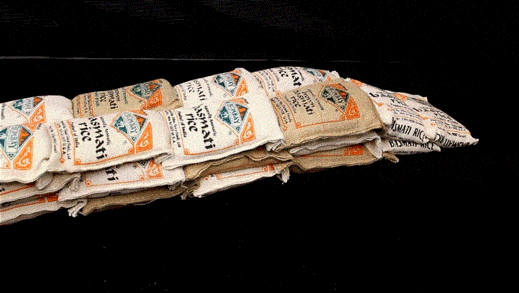Team Designs Robots to Build Things in Messy, Unpredictable Situations
Researchers at Harvard University and SUNY at Buffalo are designing robots to function outside of ideal, predictable environments such as warehouses or factories and instead work in places where there may be unexpected obstructions, and where predictive algorithms can’t be used to plan several thousand steps ahead. The goal for such “builder bots,” which are designed to handle inconsistent and malleable building materials, is to be deployed as disaster relief agents.

Radhika Nagpal, a professor of computer science at Harvard, and Nils Napp, an assistant professor of computer science at SUNY at Buffalo and a former postdoctoral fellow in Nagpal’s lab, have designed two robots: one that deposits expandable, self-hardening foam and another that drags and piles up sandbags.
Robots built for construction can usually handle only discrete materials, such as blocks or bricks. The materials these new robots build with are useful in a range of real-world environments, but they are highly unpredictable. The foam can stick to most surfaces and expand to fill holes, but it starts off as a liquid, so it’s impossible to know exactly how far it’ll run before it hardens; sandbags are frequently used in disaster relief as retaining walls, but the granules inside them have a tendency to shift around when manipulated.
To combat this unpredictability, Nagpal and Napp’s robots are equipped with an infrared sensor that takes scans and assesses the environment in between laying down a building material. The scan is integral to making the bots so adaptable.
“These robots need to continuously monitor and replan while they work,” says Napp. “That’s something that animals do, and that robots often don’t do.”
Using an algorithm that functions as a loop—scan, assess the environment, lay the material, scan again, assess the changes to the environment, lay more material, etc.—the robots are able to iteratively build as they go, taking into account any changes in the environment as well as any changes to the material they’re using.
The team is currently focusing this adaptable system on building ramps, a relatively simple structure with practical applications: they can be used to connect two points, and they also have a lot of flexibility in design.
The system is applicable for any climbing, manipulating robot that’s using any unpredictable materials, not just foam or sandbags. Nagpal also says that the system can work with multi-robot teams. Because the algorithm is adaptable, it doesn’t matter whether the uncertainty that a robot confronts comes from the environment, a material, or another robot’s behavior.
The researchers are just starting to test out the system in increasingly unpredictable environments. The next stage will be to configure a robot to build in situations where it doesn’t know what materials will be available.
Keep Reading
Most Popular
Large language models can do jaw-dropping things. But nobody knows exactly why.
And that's a problem. Figuring it out is one of the biggest scientific puzzles of our time and a crucial step towards controlling more powerful future models.
How scientists traced a mysterious covid case back to six toilets
When wastewater surveillance turns into a hunt for a single infected individual, the ethics get tricky.
The problem with plug-in hybrids? Their drivers.
Plug-in hybrids are often sold as a transition to EVs, but new data from Europe shows we’re still underestimating the emissions they produce.
Google DeepMind’s new generative model makes Super Mario–like games from scratch
Genie learns how to control games by watching hours and hours of video. It could help train next-gen robots too.
Stay connected
Get the latest updates from
MIT Technology Review
Discover special offers, top stories, upcoming events, and more.